When you are wandering the grocery store aisle or order food delivery (again) it’s easy to forget that saving food isn’t just to prevent waste, it also helps save money. Check out these food saving tips that also help me reduce my food budget.
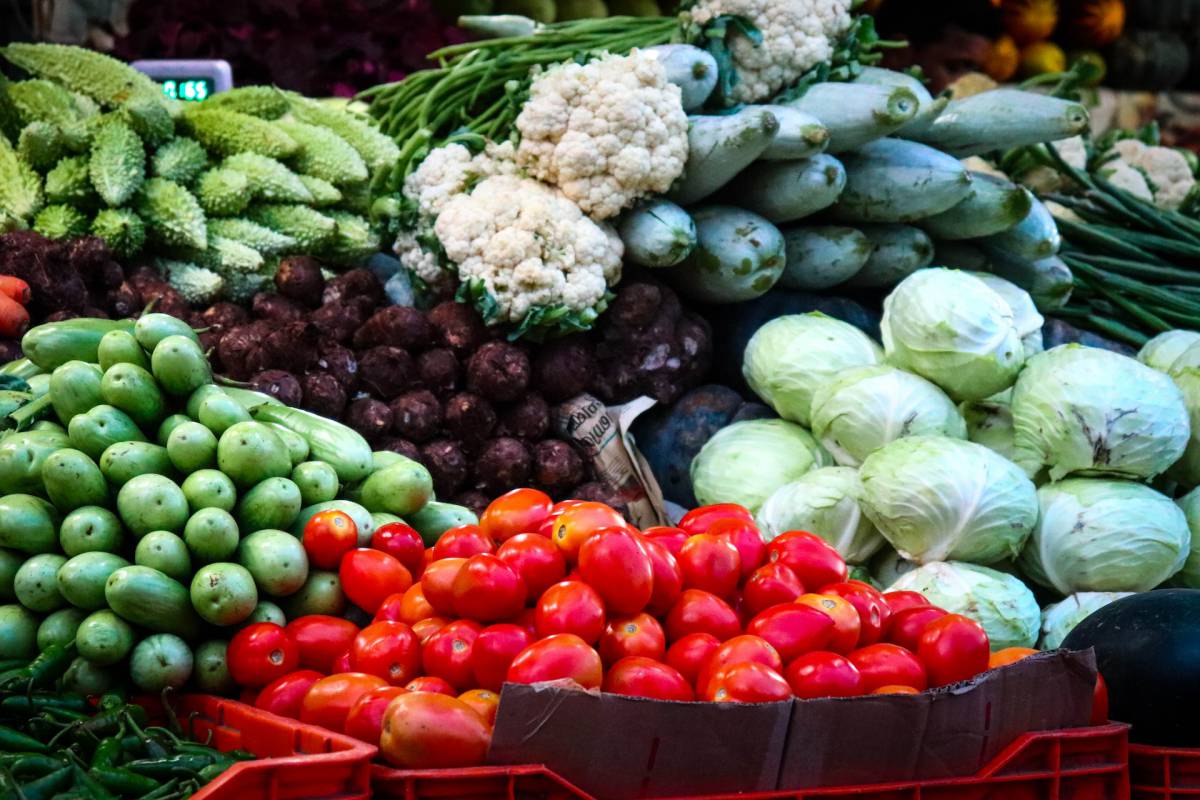
Reducing food waste has multiple benefits, for you, your community and the world. Of course, we can all save money in the kitchen.
If you are feeling the pinch from cost of living increases, then saving money needs to be a top priority. And you can save hundreds or even thousands of dollars each year. The food saving tips and tricks below are broken out by category, and there is something for everyone here!
Smart Shopping Food Saving Ideas
Make a grocery list and stick to it
By creating a comprehensive list of items before you go shopping, you can save time and money by avoiding impulse purchases. A grocery list helps you stick to your budget and ensure that you don’t forget any essential items. It can also help reduce the amount of food waste created by unplanned overbuying.
Don’t shop when you’re hungry
Shopping on an empty stomach will result in impulse purchases (often of unhealthy snacks, sugary drinks, and other ‘junk food’ items). Impulse purchases can also leave you feeling guilty for spending on unneeded items.
Have a snack before heading out, ideally something healthy like fruit. Or treat yourself to lunch out and do your shopping after.
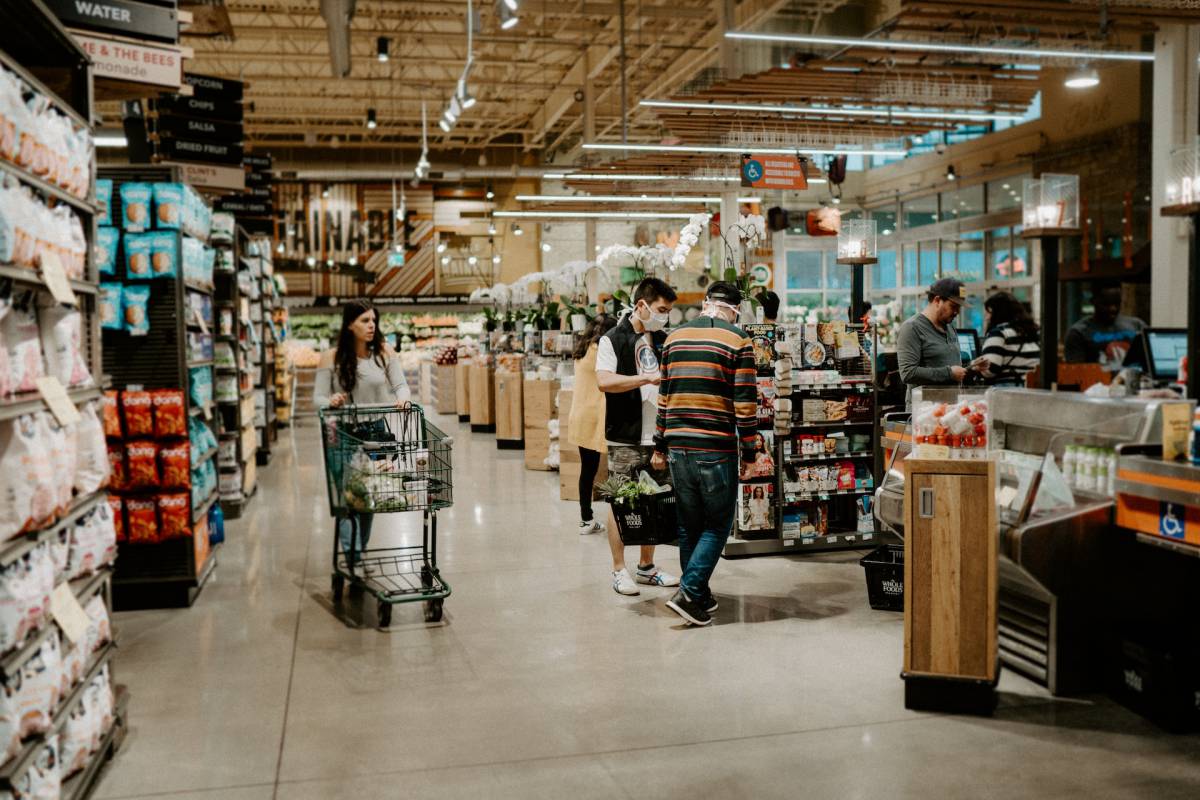
Buy frequently used items in bulk
Bulk buying is an effective way to save money in the long run. If you are constantly restocking items that you use frequently, buying them in bulk can save you a lot of money. Bulk buying reduces your cost per item and also saves time and effort, saving you from making more trips to the store.
Identify items that you use often and see if they are available in bulk, whether with larger portion size or volume discounts.
Check expiration dates before buying
Before you add an item to your cart, it’s important to double check the expiration date. It’s happened to us all, and can end up wasting money and time. If you don’t realize it before consuming them, it could also compromise your health as well.
Food Storage Tips
Keep the fridge at the right temperature
Keeping your refrigerator at the right temperature is essential to maintain the safety of your food and ensure that it stays fresh. Maintaining 40 degrees Fahrenheit or below is crucial in preventing the growth of bacteria, mold, and other microorganisms.
Not only does this help you keep food safe for consumption, but it also helps you save money by reducing food spoilage.
Store food in airtight containers
Storing food in airtight containers is a simple yet effective way to keep your edibles fresh and safe. Airtight containers prevent the spread of odors and cross-contamination, shielding your food from bacteria, moisture, and other external contaminants. This is particularly important in the fridge, where odors can quickly spread and affect the flavor of other foods.
When choosing airtight containers, opt for food-grade materials with a tight-fitting lid, such as glass or BPA-free plastic. Remember to follow specific storage instructions for different foods to ensure that they stay fresh and safe to eat.
Use clear storage containers
Using clear containers for storage is a practical and convenient solution to easily identify your stored items. You can easily locate what you need without opening each container, which can help save time and frustration.
They also help reduce food waste by preventing items from getting lost or forgotten in the back of the fridge. Clear containers also help keep track of food inventory, making it easier to see when items need restocking.
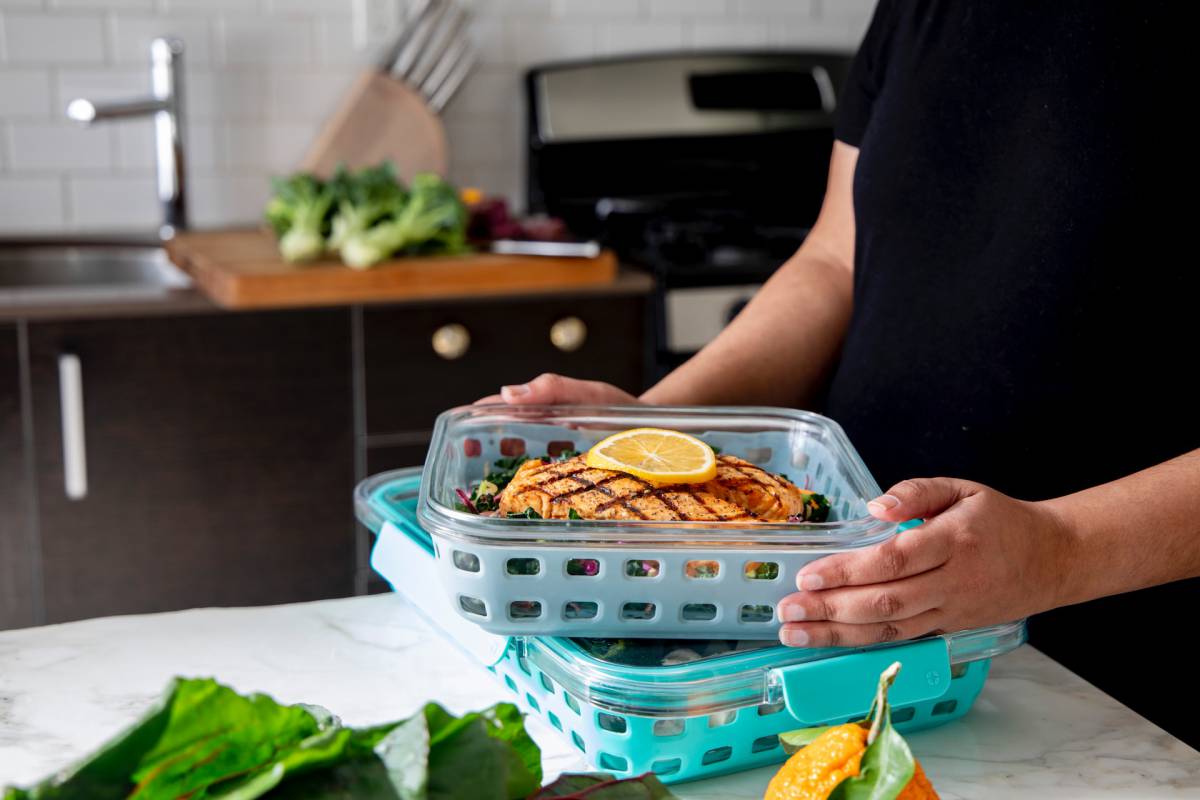
Store fruits and vegetables separately
To keep your fruits and vegetables fresh and flavorful, store them separately. Fruits naturally emit a ripening agent, ethylene gas, which can cause vegetables to ripen and spoil faster than intended.
To avoid this, it’s important to store your fruits and vegetables in separate containers or compartments. Separating them will both prevent the cross-contamination of flavors and extend their shelf life. This can also help control the humidity levels. Additionally, consider using breathable containers or perforated bags to allow proper airflow and prevent moisture buildup.
Freeze leftovers in single-serving portions
Freezing leftovers in individual portions is a convenient and efficient way to save time and reduce food waste. By dividing larger portions into single servings, you can easily reheat only what you need without having to thaw and reheat the entire container. This not only saves time and energy but ensures that you have a quick and healthy meal on hand whenever you need it.
Consider using freezer-safe containers or bags to store your single servings, and label them with the contents and date to keep track of your freezer inventory. This can also promote better portion control, helping to avoid overeating and overcooking. It’s a smart solution for busy schedules and responsible food management.
Creatively Use Food Leftovers
Turn leftover vegetables into soup
Don’t let your leftovers go to waste – transform them into flavorful and nutritious soup. This classic and easy meal is a great way to repurpose your leftovers into a delicious and satisfying dish. And you can customize it to your liking and use whatever ingredients you have on hand.
It’s also a budget-friendly and sustainable option that reduces food waste. Plus, soup can be stored in the fridge or freezer for later consumption, making it a convenient and versatile meal option.
Use leftover meat in sandwiches, wraps and more
You can also repurpose meat and other proteins into delicious and easy meal options. Leftover meats, such as chicken or beef, can be transformed into a flavorful filling for sandwiches or wraps, or as a taco topping.
Pair them with fresh veggies and add a zesty sauce or spices for flavor. This is also a budget-friendly and sustainable option that reduces food waste.
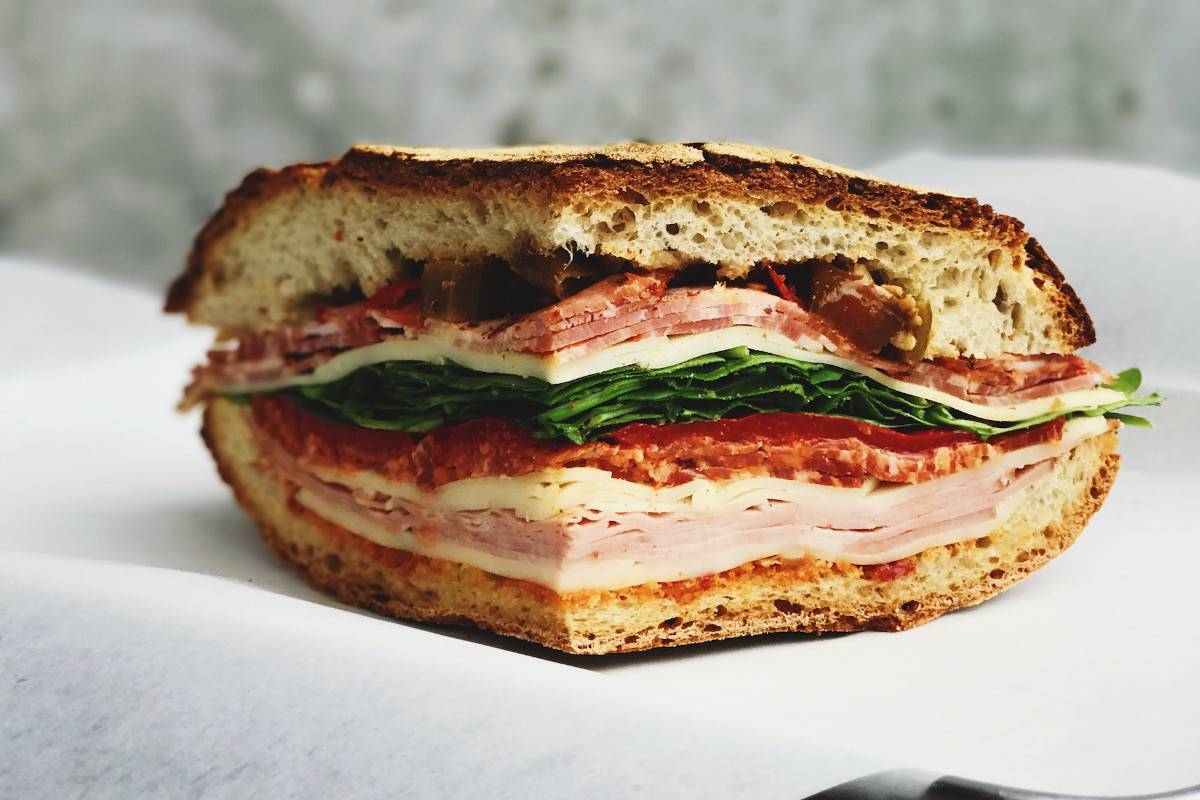
Make stir-fry with leftover rice and veggies
You can transform leftover rice and veggies into a flavorful stir-fry and elevate your leftovers into a satisfying and delicious meal. By adding protein, such as tofu or shrimp, you can create a well-balanced dish that is packed with nutrients.
Stir-fry is an excellent meal option that is both quick and easy to prepare, making it perfect for busy weeknights. Plus, it’s a great way to use up leftover ingredients and reduce food waste, while still enjoying a tasty and healthy meal.
Use stale bread to make breadcrumbs or croutons
Stale bread doesn’t have to go to waste – it can be transformed into delicious and versatile ingredients that can be used in a variety of dishes. One way to repurpose stale bread is to turn it into homemade breadcrumbs or croutons. Breadcrumbs are a great way to add texture and flavor to meatballs, meatloaf, and casseroles, while croutons can be added to salads and soups for an extra crunch.
You can then store them in an airtight container for future use. By repurposing stale bread into breadcrumbs or croutons, you’re not only reducing food waste but also saving money on store-bought versions. And homemade bread crumbs and croutons taste better and are often healthier than store-bought ones, as they don’t contain any additives or preservatives.
Substitutions & Alternative Cooking Methods
Use substitutes when you don’t have all ingredients
Cooking is a creative process, and sometimes it requires flexibility and resourcefulness. When you don’t have all the necessary ingredients, don’t worry. There are often plenty of substitutes that can be used in their place.
For example, combining regular milk with vinegar or lemon juice can be a substitute for buttermilk. Experimentation can often lead to delicious new discoveries, so don’t be afraid to try new things and think outside the box.
Make your own spice blends
Spices are often used to make food taste delicious. Why not experiment with different combinations of spices to create your own unique flavors?
Making your own spice blends is both a food saver and money saver. And you have the creative pride of blending or even growing your own herbs and spices. Instead of buying premade blends that may contain additives and fillers, you can mix your own. Homemade spice blends even make nice gifts for friends and family who enjoy cooking.
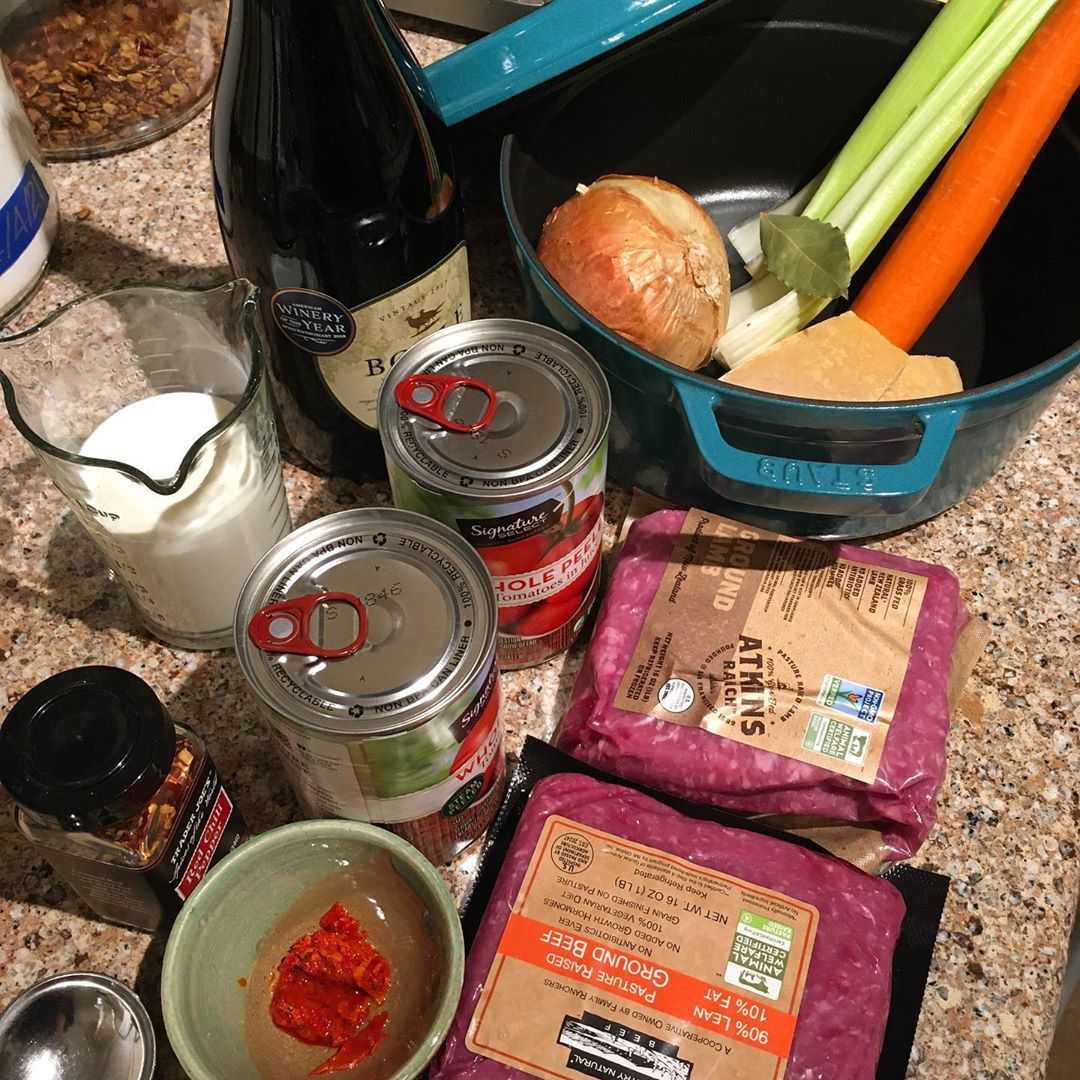
Experiment with different cooking methods
Different cooking methods can also help save food and lead to whole new worlds of culinary enjoyment. Trying out new techniques can help you to develop your culinary skills and expand your repertoire of recipes.
It also adds variety to your meals and keeps things interesting in the kitchen. And some cooking methods are even better suited to certain types of food. So don’t be afraid to research which methods work best for the ingredients you have on hand.
Use All The Food
Use vegetable scraps to make broth
Don’t throw away your vegetable scraps! You can use them to make a delicious and healthy broth. Vegetable scraps like onion peels, carrot tops, and celery leaves can be used to make a flavorful and nutrient-rich broth. This is an excellent way to reduce food waste and get the most out of your produce.
All you need to do is simmer the scraps in water with aromatic herbs and spices, strain the broth, and use it in soups, stews, or other dishes to add flavor and nutrition. You can also freeze the broth for later use.
Use the stalks of herbs in soups or stews
When cooking with fresh herbs, it’s easy to focus solely on the leaves and forget about the stalks. But the stalks of herbs can also contribute to the flavor, and are often overlooked in recipes. To make the most of your herbs, try adding the stalks in soups or stews.
By finely chopping and adding them as the stew or soup simmers, the stalks will release their flavor, infusing the dish with a delicious and nuanced herbaceous taste.

Use leftover chicken bones to make stock
Don’t throw away chicken bones! Leftover chicken bones can be repurposed into a flavorful and nutritious chicken stock. Boiling the bones with aromatic vegetables and herbs for a few hours will extract all the delicious and beneficial nutrients from the bones, producing a savory and versatile broth.
You can use this chicken stock to add depth of flavor to soups, stews, sauces, and more. It can even be used as a base for cooking rice or quinoa. Making chicken stock reduces waste, saves money and adds a homemade touch to your cooking.
Buy Seasonal Fruits and Vegetables
Buy produce when in season
Buying produce when it’s in season has many benefits. In-season produce is often at its peak flavor and nutrition since it is usually allowed to fully ripen before being harvested. It is also typically more affordable, as there is a greater supply available.
Additionally, buying in-season produce can support local farmers. It’s a win-win-win for your taste buds, your wallet, and your community.
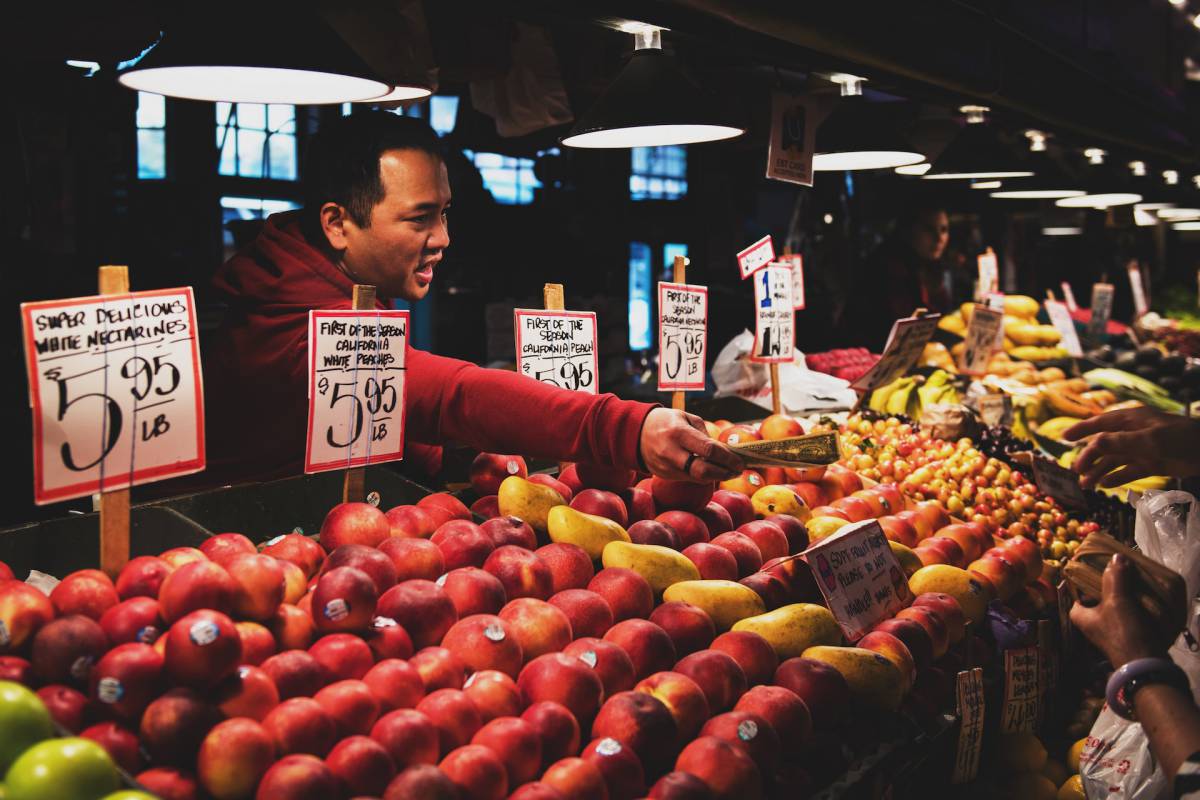
Freeze seasonal produce to use later
So, buying seasonal produce in bulk is an option and freezing this produce is an excellent way to benefit from good prices and enjoy your abundance of fresh fruits and vegetables throughout the year.
Freezing produce at the peak of its freshness can lock in essential vitamins and nutrients. You can freeze produce such as berries, peaches, and greens to use in smoothies, baked goods, or even as a side dish later in the year. It’s a convenient and cost-effective way to enjoy your favorite seasonal produce all year round.
Shop at local farmers markets
Shopping at local farmers markets is a great way to support your community and get access to fresh, locally grown produce. Not only do farmers markets offer a wider variety of fruits and vegetables than you might find at a grocery store, but they also allow you to connect directly with the people who grew your food. I live in the San Francisco Bay Area, where the original “farm to table” movement began.
Farm-to-table is about supporting better quality food and sustainable farming practices while also reducing the environmental impact of transporting food long distances.
Farmers markets give you a deep appreciation for the work that goes into producing the food we eat, and can even inspire you to try new recipes with ingredients you may not have considered before.
Learn to Preserve Food
Pickle vegetables
Pickling vegetables is a simple and delicious way to preserve them for longer and add some flavor to your dishes (while reducing food waste). Pickled vegetables, such as cucumbers, carrots, and radishes, are a great addition to sandwiches, salads, and charcuterie boards.
The process also preserves the vitamins and minerals of the vegetables. Pickled vegetables can be stored in sterilized jars in the refrigerator for several weeks, making them a great option for meal prep and snacking.
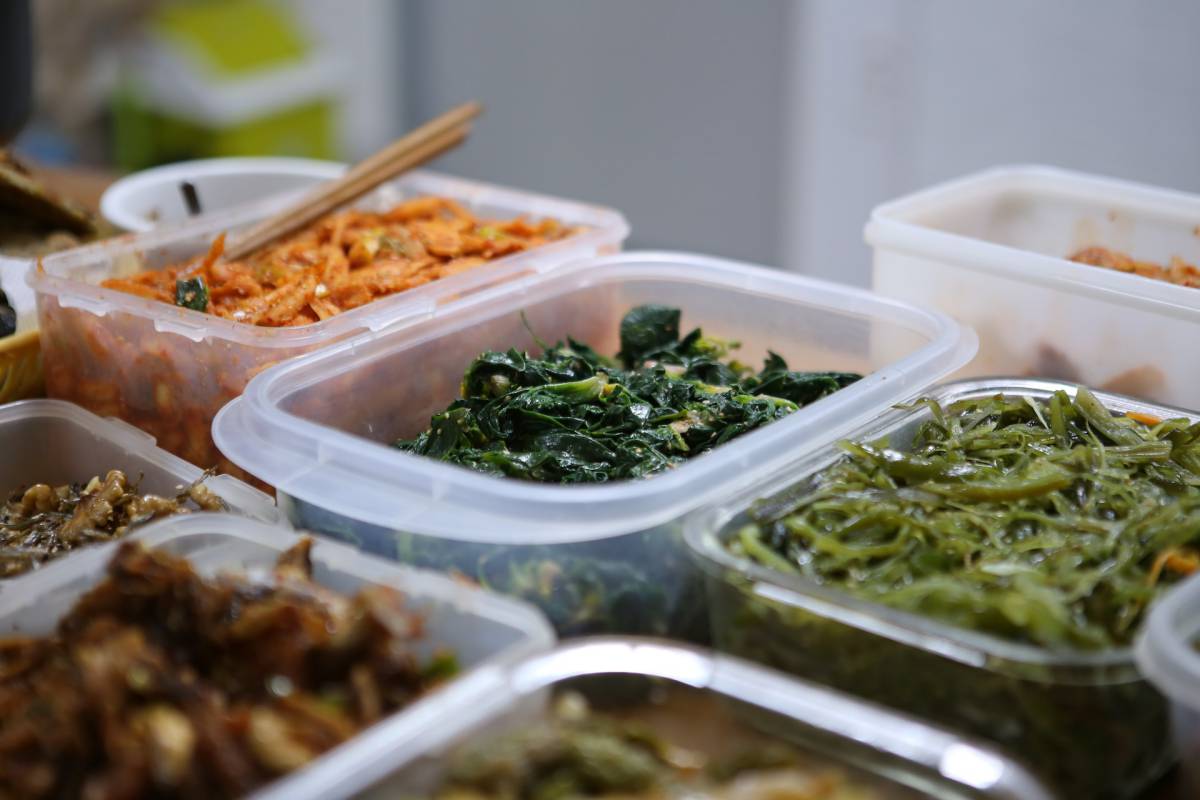
Can fruit
Canning fruit is a wonderful way to preserve the sweet, juicy flavors of your favorite fruits and enjoy them all year round. Whether you’re dealing with a surplus of produce or just looking to extend its shelf life, preserving fruit is a great option.
Canned fruits can be used in a variety of ways, from topping your morning oatmeal to making homemade pies and cobblers. The canning process also preserves the nutritional value of the fruit!
Freeze herbs in oil or water
Freezing herbs in oil or water is a smart hack to extend the shelf life of your fresh herbs while also retaining their aroma, flavor, and color. This technique is easy to do by chopping up the herbs and placing them in an ice cube tray filled with either water or oil.
Once frozen, you can pop out the herb cubes and add them directly to your cooking for an instant flavor boost. This is perfect for home cooks who want to save time and reduce food waste by using up fresh herbs before they go bad, and can be considered an alternative to drying homegrown herbs and spices.
Make homemade jam
Making homemade jam is a great way to transform seasonal fruits into a sweet, spreadable treat. By cooking down fresh fruit with sugar and pectin, you can create a flavorful jam that can be used in a variety of ways, from topping your morning toast to filling pastries or adding to savory dishes.
You can also customize it to your liking by adjusting the sweetness and incorporating complementary flavors like spices or citrus zest. By sealing the jam in sterilized jars, you can turn seasonal fruit into something you can enjoy throughout the year. And that also means reducing food waste and saving money over the long run.
Know When to Throw Out Food
Check expiration dates
Always check the expiration dates of food products before consuming them. These dates provide an indication of how long a food product is safe to consume. It’s often labeled as “best by” or as a “sell by” date. But it can also be considered when the food may begin to spoil.
Paying attention to expiration dates can help you avoid buying food that you may have to throw away. But, more importantly, consuming spoiled food that could cause food-borne illnesses, such as stomach upset, vomiting, and diarrhea. In addition to expiration dates, it’s also important to follow storage instructions and proper food handling practices to ensure food safety.
Use your senses when checking for spoiled food
Our senses have evolved over millennia to help keep us safe, and that certainly includes food-related safety. In addition to checking expiration dates, note any changes in color, texture, and odor. For example, if fruits and vegetables are discolored or slimy, they may be past their prime.
We’ve all had milk ‘incidents’ at some point. If dairy products have a sour odor or taste, they probably have gone bad. Together with good planning and management, trusting your senses and staying alert to changes in food quality can help ensure you and your family are consuming safe and fresh food.
Avoid food left out for more than 2 hours
To ensure food safety and prevent foodborne illness, it is important to follow the two-hour rule. Bacteria grow rapidly at room temperature, and leaving perishable food out for more than two hours can increase the risk of contamination.
In warmer temperatures (above 90°F/32°C), the time limit should be reduced to one hour max. Risks can be reduced significantly if you promptly refrigerate or freeze any leftover food to extend its lifespan and prevent spoilage.

Plan Meals in Advance (Apps Can Help)
Plan meals for the week
Planning your meals for the week is not just about saving time and saving food, but it can also help you make healthier choices and save money. By taking inventory of what you already have, you can plan meals that utilize those ingredients and reduce the likelihood of them going to waste.
Batch cooking and meal prepping can also save time and ensure that you always have a healthy meal on hand. As noted above, creating a shopping list and sticking to it will help you stay on budget and avoid unnecessary purchases that may lead to food waste.
Apps for that (food inventory, meal planning and recipe apps)
With the help of technology, managing your food inventory, meal planning, and recipe search has never been easier. By using food inventory apps such as Pantry Check or Food Storage App, you can keep track of the items in your pantry and fridge, and plan your shopping to prevent overbuying or food waste.
Meal planning apps like Mealtime or Paprika can guide you in creating well-balanced meals for the week while considering the ingredients you already have. And recipe apps like Yummly or Cookpad have a “search by ingredient” feature that allows you to find recipes based on the ingredients you already have, making it easy to come up with creative and delicious meal ideas.
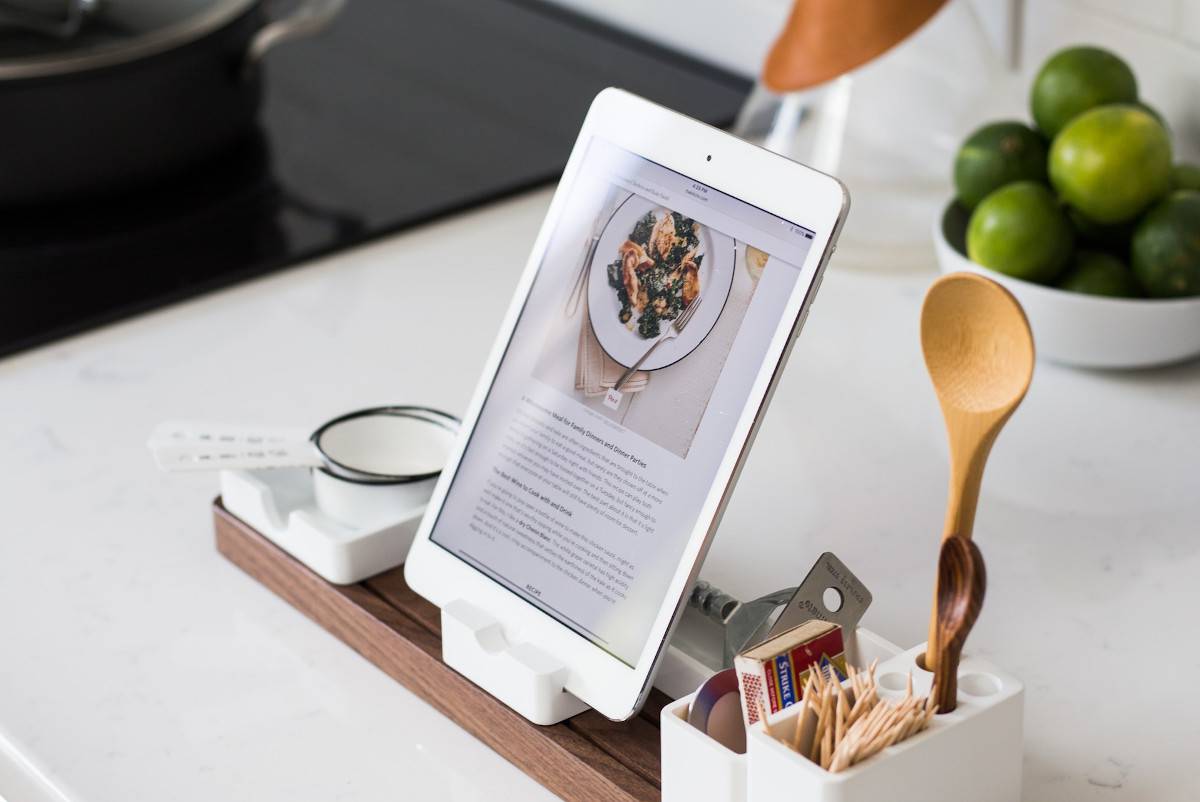
Make shopping lists based on meal plans
Once you start keeping inventory and planning meals and recipes, you can more easily set a shopping list for the whole week, according to those specific meal plans.
Batch cooking and meal prepping doesn’t just result in healthier choices and money savings. By combining smart tech and good habits you will save time too.
By following these food saving tips and tricks, you can reduce your food waste and save money on your grocery bill. With a little planning and creativity, you can turn leftovers into delicious meals and stretch your food budget further than you thought possible.
